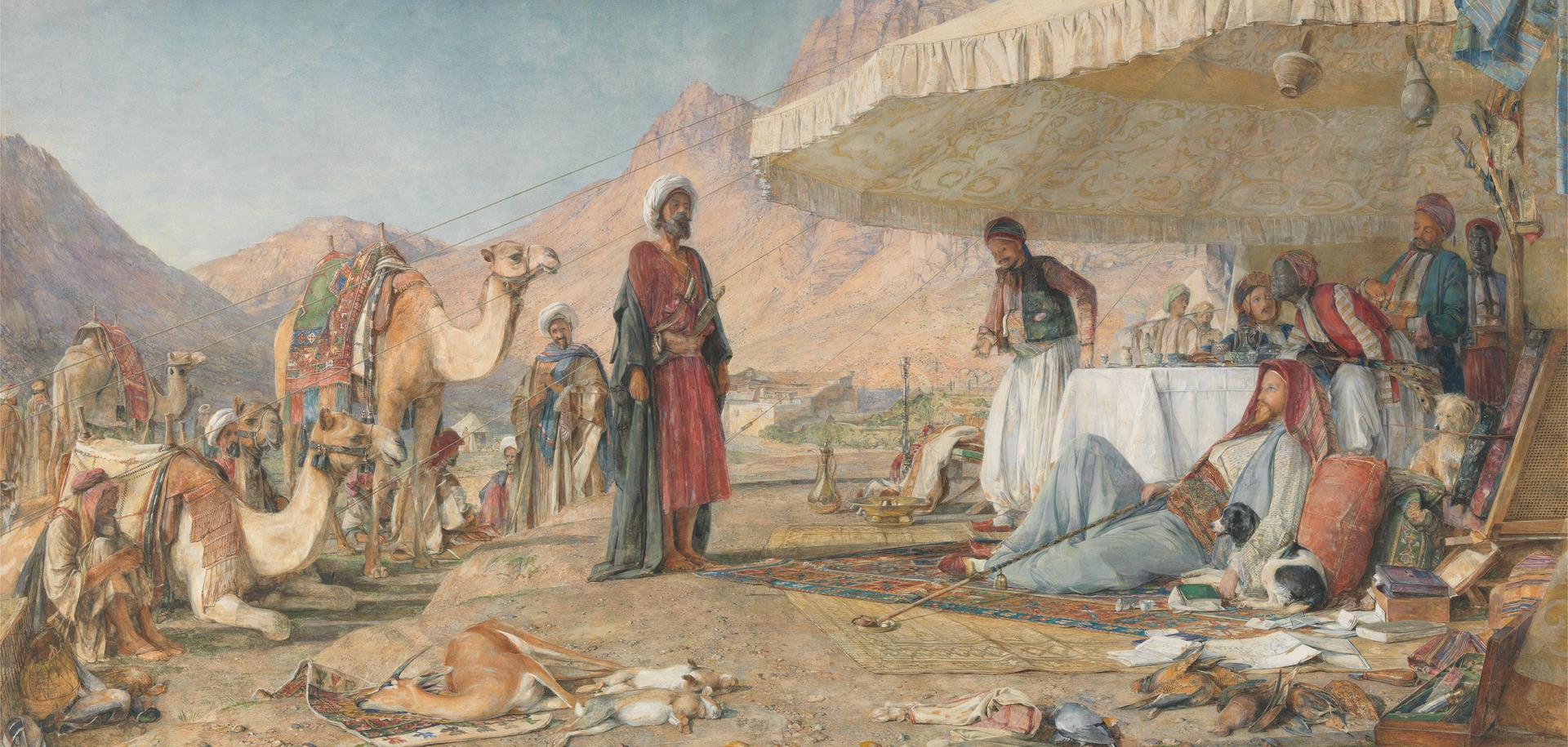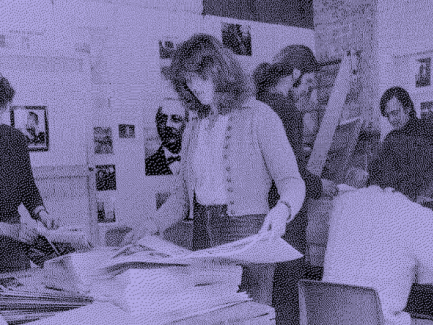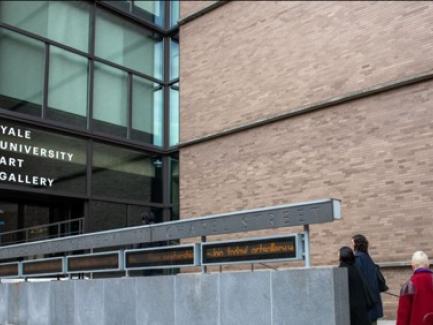East Meets West: John Frederick Lewis’s "A Frank Encampment in the Desert of Mount Sinai"
Object of the Week
July 14, 2020
Today, we revisit the work of the English painter John Frederick Lewis, who was born on this day in 1804. He is best known for his realistic genre scenes of Middle Eastern life and lovingly rendered interpretations of Islamic people, architecture, furnishings, screens, and costume. His watercolor A Frank Encampment in the Desert of Mount Sinai. 1842—The Convent of St. Catherine in the Distance (1856) is painted in the most remarkable technique, layering small brush strokes of paint that creates a jewel-like luminosity in this desert scene. The work is painted on a huge piece of off-white paper, an uncommonly scaled material for this time period.
In designing this scene, Lewis first carefully drew with pencil so that he could plan out the image and work on individual passages since the water-based paint dries so fast. The paper is covered with dots, dashes, and stipple marks in watercolor. Complementary colors overlap, and glazing and scumbling techniques are employed to create optical mixtures that result in a shimmering effect between translucent and opaque passages. Despite Lewis’s careful planning, he did increase the height of the central figure of the Sheik, following his initial drawing, as identified using X-ray fluorescence spectroscopy.
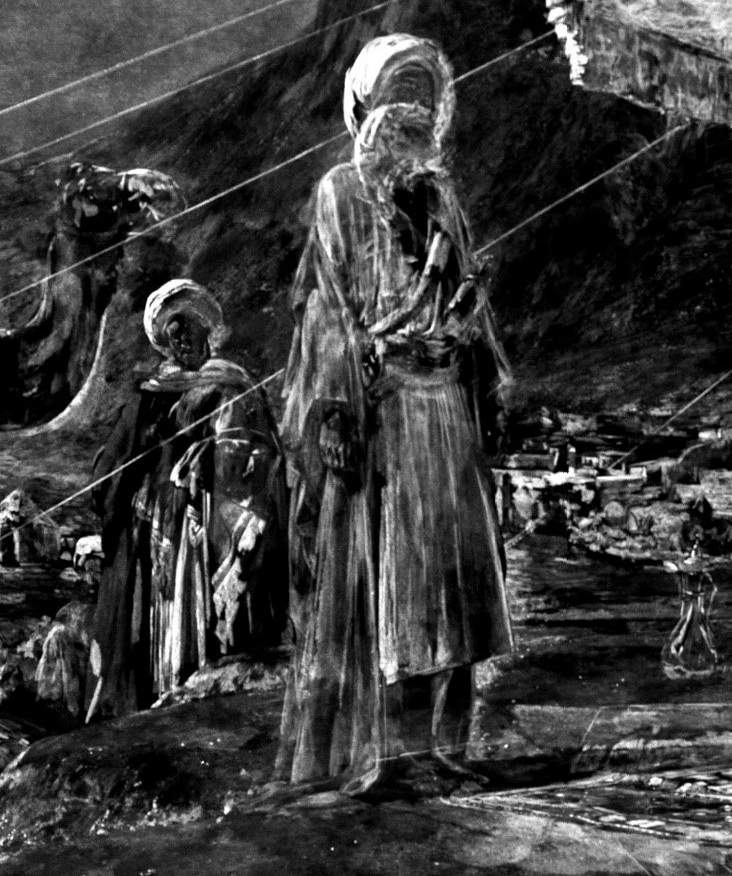
X-ray fluorescence element map showing the distribution of zinc, likely present as zinc oxide, detail of John Frederick Lewis's A Frank Encampment in the Desert of Mount Sinai
The white areas in this X-ray image capture many locations where zinc oxide, or Chinese white, was used. Zinc oxide was named Chinese white because of the colorant’s association with the white clay body used in Chinese export porcelain. This pigment was used in watercolor painting because it didn’t discolor on exposure to air like lead white (basic lead carbonate). In addition to Chinese white, Lewis also used some lead white and Permanent white (barium sulfate), so-called because it was nondarkening. The artist leveraged each of these white pigments for their different optical and working properties: Chinese white for bright highlights, lead white for opaqueness, and Permanent white for its ease of removal in small passages.
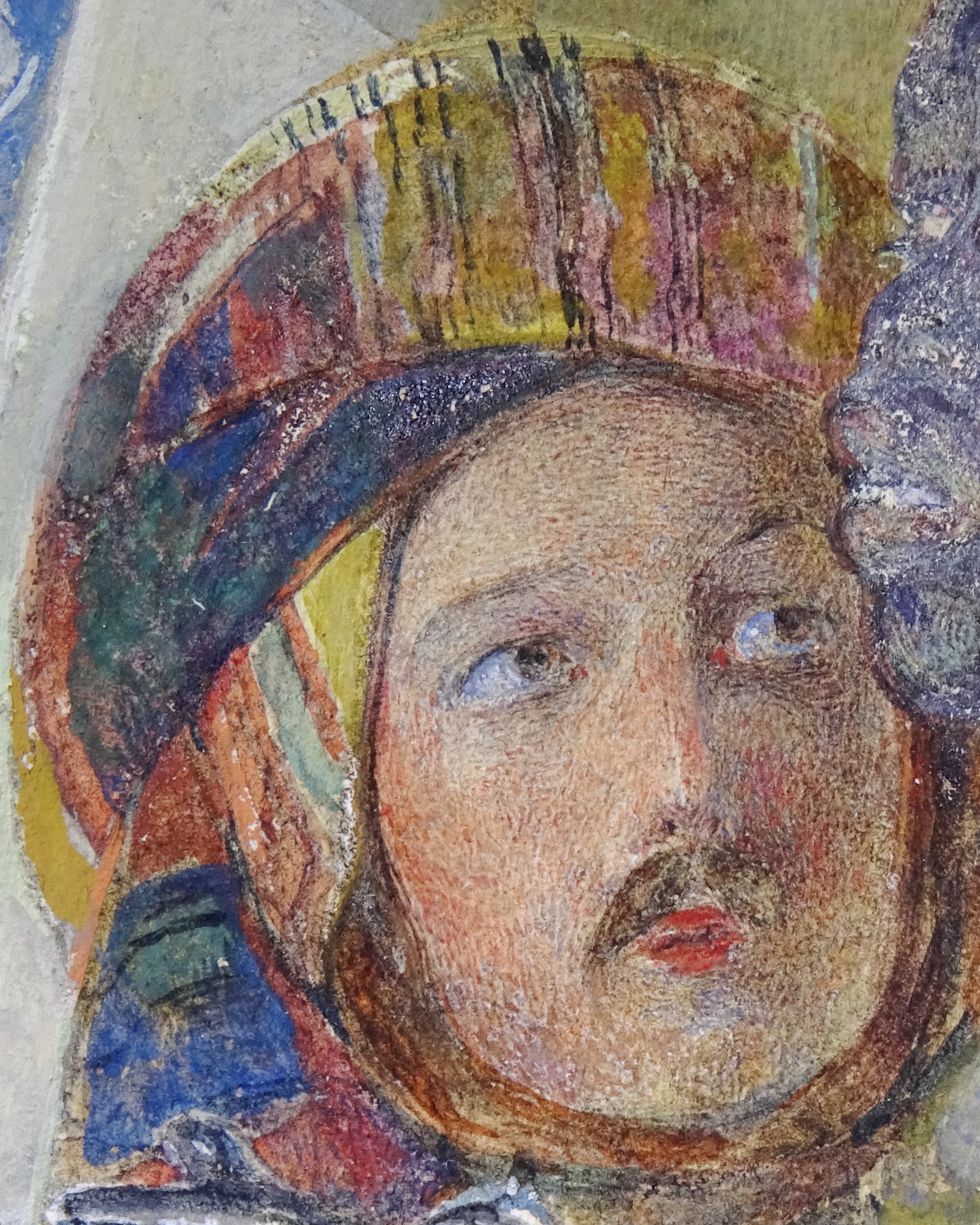
Small pinpoint losses of watercolor seen in dark bands of the hat and in the partial face on the right, detail of John Frederick Lewis's A Frank Encampment in the Desert of Mount Sinai, photo by Richard Caspole
To emphasize certain dark areas, Lewis added additional gum arabic to his pigment. The gum, which is derived from the acacia tree, saturated his colors giving them depth, a unique sheen, and enhanced visual power. In some cases too much gum causes paint to shrink and crack, resulting in flaking and paint loss.
Conservation treatment, conducted by the Center’s team in collaboration with colleagues at Yale’s Institute for the Preservation of Cultural Heritage, included carefully relaxing and reattaching loose flakes of paint with adhesive under a microscope. Despite these minor lacunae, Lewis’s superb craftsmanship has helped his masterpiece on paper survive for more than 164 years. The following detail shows the wide variety of small brushstrokes and layers of transparent and opaque watercolor that Lewis used to render this watercolor.
Detail of John Frederick Lewis's A Frank Encampment in the Desert of Mount Sinai, photo by Richard Caspole
Beyond a technical analysis, one might ask what the subject of this painting is and what “Frank” means. In the Middle East during the nineteenth century, “Frank” referred to a European or anything from Western Europe, and this painting depicts the meeting of a “Frank” (the reclining Westerner) with Sheik Hussein of Gebel Tor (the Arabic name for Mount Sinai). Saint Catherine’s Monastery—visible in the background of Lewis’s work—was created by the Byzantine Emperor Justinian as a refuge for Christians between 548 and 565 CE. This holy site is where Moses observed the burning bush, and a mosque was later built within the monastery where local Bedouins still worship today. The painting illustrates the possibility of a productive dialogue between Eastern and Western cultures and the coexistence of Muslim and Christian faiths.
Written by Theresa Fairbanks-Harris, Senior Conservator of Paper, Yale Center for British Art; and Richard Hark, Conservation Scientist, Yale Institute for the Preservation of Cultural Heritage
